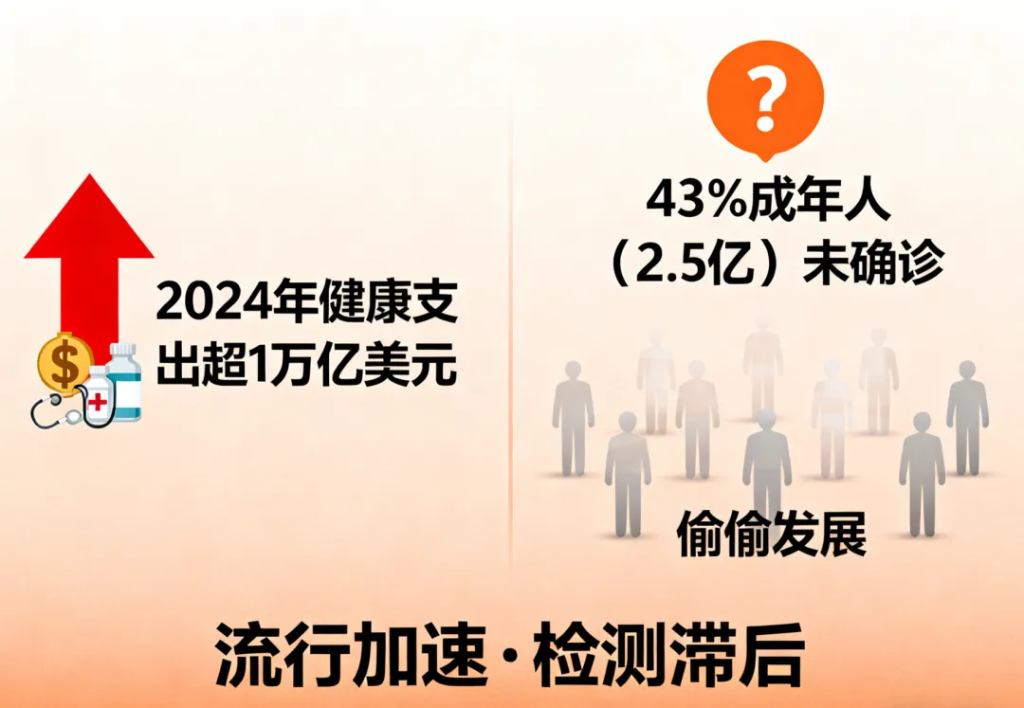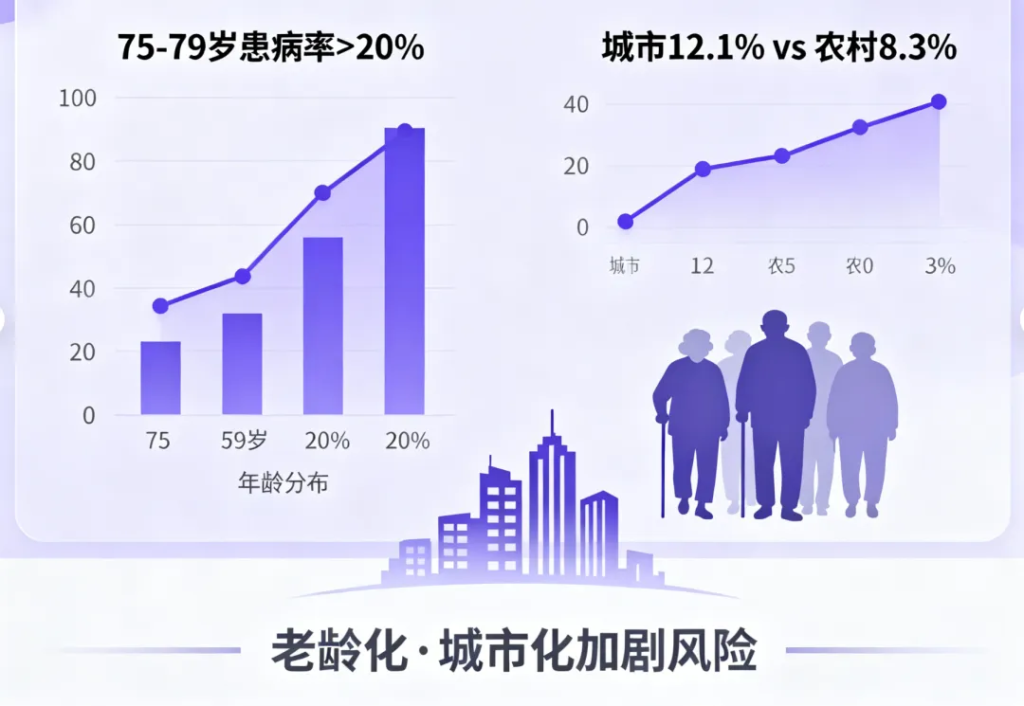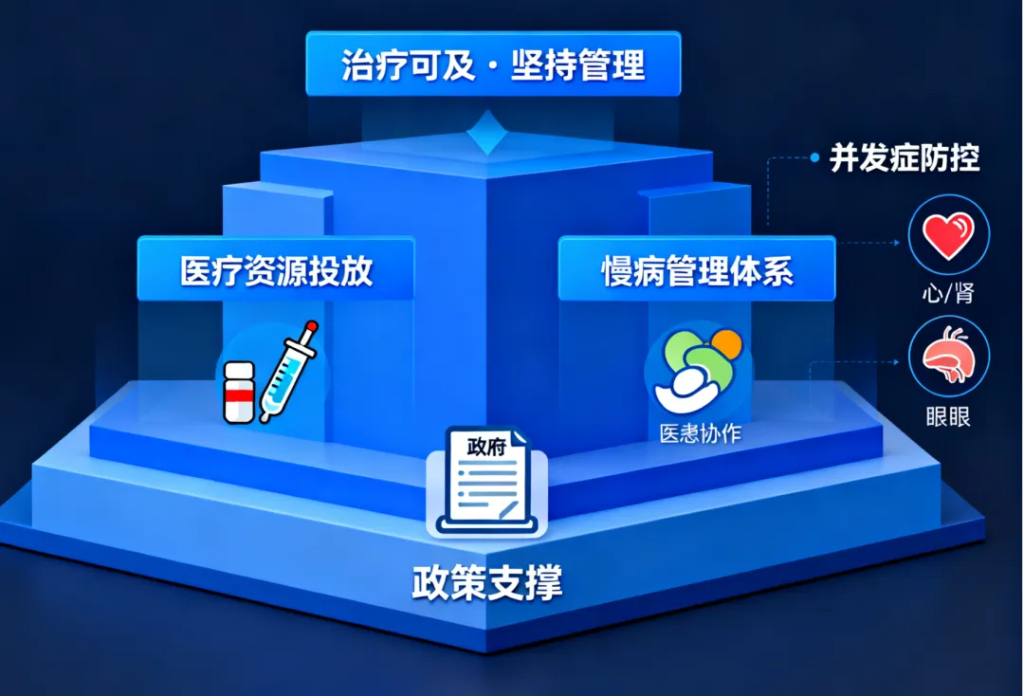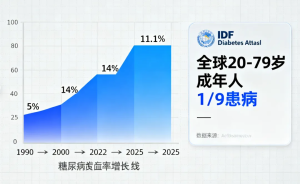Global Diabetes Situation: Over 1 in 10 Adults Affected, Prevention Is More Urgent Than Ever
Diabetes has long ceased being a disease confined to affluent nations—it has evolved into a major global public-health crisis. Recent data remind us: the number of people living with diabetes is huge, growing fast, and concentrated in regions where health systems are weakest.
1. Current scale and growth
-
According to the International Diabetes Federation (IDF) Diabetes Atlas 2025 edition, approximately 11.1% of adults aged 20-79 worldwide—about 589 million people—have diabetes. International Diabetes Federation

-
The same report projects that by 2050, about 853 million adults will be living with diabetes. Diabetes Atlas+1
-
The World Health Organization (WHO) reports that the number of people with diabetes rose from 200 million in 1990 to around 830 million in 2022. who.int+1

-
Disturbingly, over 40% of adult diabetes cases globally remain undiagnosed, meaning many people only realise their illness when complications appear. International Diabetes Federation
2. Regional and socio-economic disparities
-
More than 80% of people with diabetes live in low- and middle-income countries (LMICs). PMC+1
-
The growth rate of diabetes prevalence is higher in LMICs compared with high-income countries, driven by lifestyle shifts, urbanisation and ageing populations. who.int+1

-
For example, in the western Pacific region, including countries such as Vietnam, the adult diabetes count rose from 1.7 million in 2011 to 2.5 million in 2024. Diabetes Atlas
3. Major drivers behind the increase
-
Obesity and overweight: Excess adiposity is the strongest modifiable risk factor for type 2 diabetes.
-
Sedentary lifestyle and urbanisation: More people perform less physical activity, shifting from rural labour to urban desk-oriented jobs.
-
Dietary changes: Increased consumption of high-sugar, high-fat processed foods; reduced intake of whole grains, fruits and vegetables.

-
Ageing populations: Older age is associated with higher diabetes risk; as global populations age, the burden increases.
-
Limited screening and treatment coverage: Many countries lack infrastructure for early detection and continuous management.
4. Prevention and control: What should we focus on?
Addressing the diabetes epidemic effectively requires three key strategies:
-
Early detection and screening: Regular blood glucose and HbA1c checks, especially for high-risk groups (overweight, family history, gestational diabetes history).

-
Lifestyle intervention: Weight control, increased physical activity (at least 150 minutes/week moderate intensity), healthy diet (limit sugary drinks and processed foods, prioritise whole grains and vegetables).

-
Strengthening health systems: Especially in LMICs, improving access to diagnostics, affordable treatment, structured chronic-disease management, and addressing complications early.

5. Final thoughts
The current global diabetes situation can be summarised as “high prevalence, accelerating growth, unequal burden”. For individuals, the message is clear: prevention begins with lifestyle. For societies, the challenge is systemic: ensuring early detection, accessible treatment and continuous care.
In short, diabetes is not just a personal health issue—it is a public-health and economic issue that demands coordinated effort. Only by shifting from reactive treatment to proactive prevention can we hope to change the trajectory.
Eltromin 25/50 Eltrombopag
Enatinib 4/10 Lenvatinib
Lynparib Olaparib
Coltinib Upadacitinib
Alvonib Osimertinib
Techno
Well-known pharmaceutical company in Bangladesh:https://www.radiantpharmacil.com

















暂无评论内容